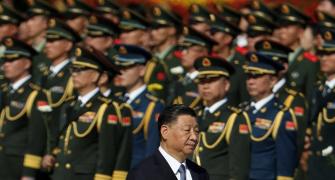Using buyback as a divestment tool is not new, the amount raised this year is phenomenally high.

The fiscal 2016-17 is set to go down as a record year for government divestment. With nearly Rs 37,200 crore (Rs 372 billion) raised so far proceeds have already surpassed the previous best of Rs 24,348 crore (Rs 243.48 billion) in 2014-15.
However, a closer look at the data shows close to half of the divestment proceeds this fiscal have been on account of share buybacks. Also, most of the share sales done through the open market have been bailed out by state-owned financial institutions, particularly insurance giant Life Insurance Corporation of India (LIC).
Market players say buybacks and bailouts defeat the basic principles of divestments which is to "promote people's ownership" in public sector undertakings (PSUs).
Data compiled from Department of Investment and Public Asset Management (Dipam) shows, nearly Rs 16,000 crore (Rs 160 billion) has been raised through buybacks this year.
In other words, the Rs 16,000 crore worth of cash reserves of PSUs have got transferred to the divestment kitty of the exchequer. Under a share buyback a company repurchases its own shares from its shareholders (in this case the government) using the cash reserves. The repurchased shares are extinguished resulting in shrinking of its equity base.
Using buyback as a divestment tool is not new, the amount raised this year is phenomenally high.
Concurring buyback isn't divestment in a true sense a senior Dipam official said they had to resort to it due to "volatile market conditions".
Excluding buybacks, the divestment proceeds for this fiscal stand at Rs 21,600 crore (rs 216 billion), which includes Rs 6,000-crore (rs 60 billion) raised through CPSE ETF second tranche and stake sale of shares under Suuti in L&T and ITC. Back of the envelope calculations show, LIC has picked up shares worth Rs 10,000 crore (Rs 100 billion) in various divestments this fiscal.
Criticising the strategy to use buybacks and LIC bailouts, an investment banker on condition of anonymity said, "The centre is forcing the PSUs to give up their cash reserves. In open market offerings they are asking institutions like LIC, who raise money from public, to subscribe to divestments whether or not the fund manager is comfortable investing in the said entity."
Over the years, buybacks and high dividend demands have crippled the cash reserves of numerous PSUs. The cash and equivalents of PSUs has fallen more than 20 per cent in the first half of FY17 compared to the amount in FY16, Capitaline data showed.
"One of the direct fallout of buyback mechanism is that it burns the cash reserves of the PSUs, impacting their financial health. Share sale through offer for sale (OFS) is a good route, however, the divestment suffers as shares tend to correct in the secondary market after the OFS announcement. The government needs to work around a strategy," said G Chokkalingam, founder, Equinomics Research & Advisory.
Some of the big ticket divestment issues launched during the fiscal were NMDC buyback, the further fund offering (FFO) or second tranche of CPSE ETF and stake sale in ITC & L&T.
During the year 2014-15, bulk of the proceeds where raised through OFS. However, Coal India's OFS alone had contributed nearly Rs 22,000 crore (Rs 220 billion) to the divestment kitty.
Photograph: Mukesh Gupta/Reuters







